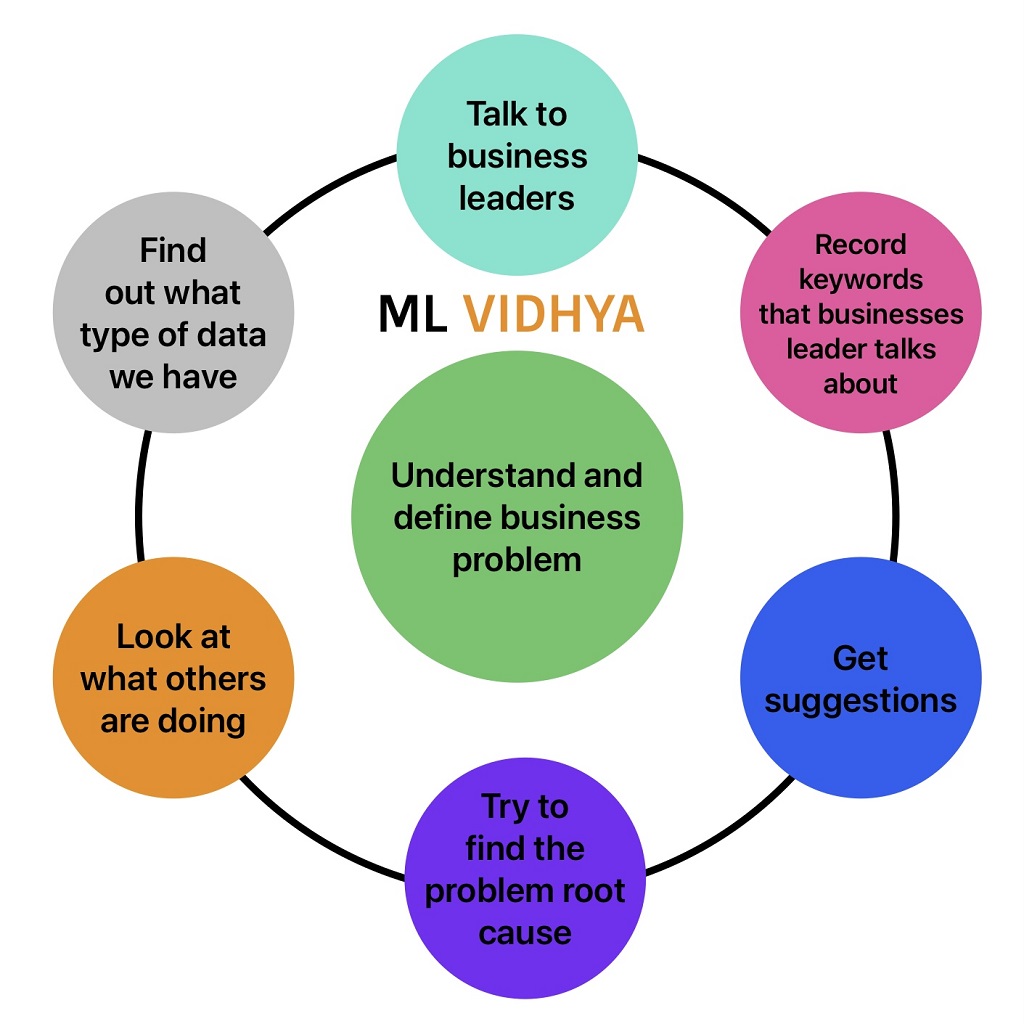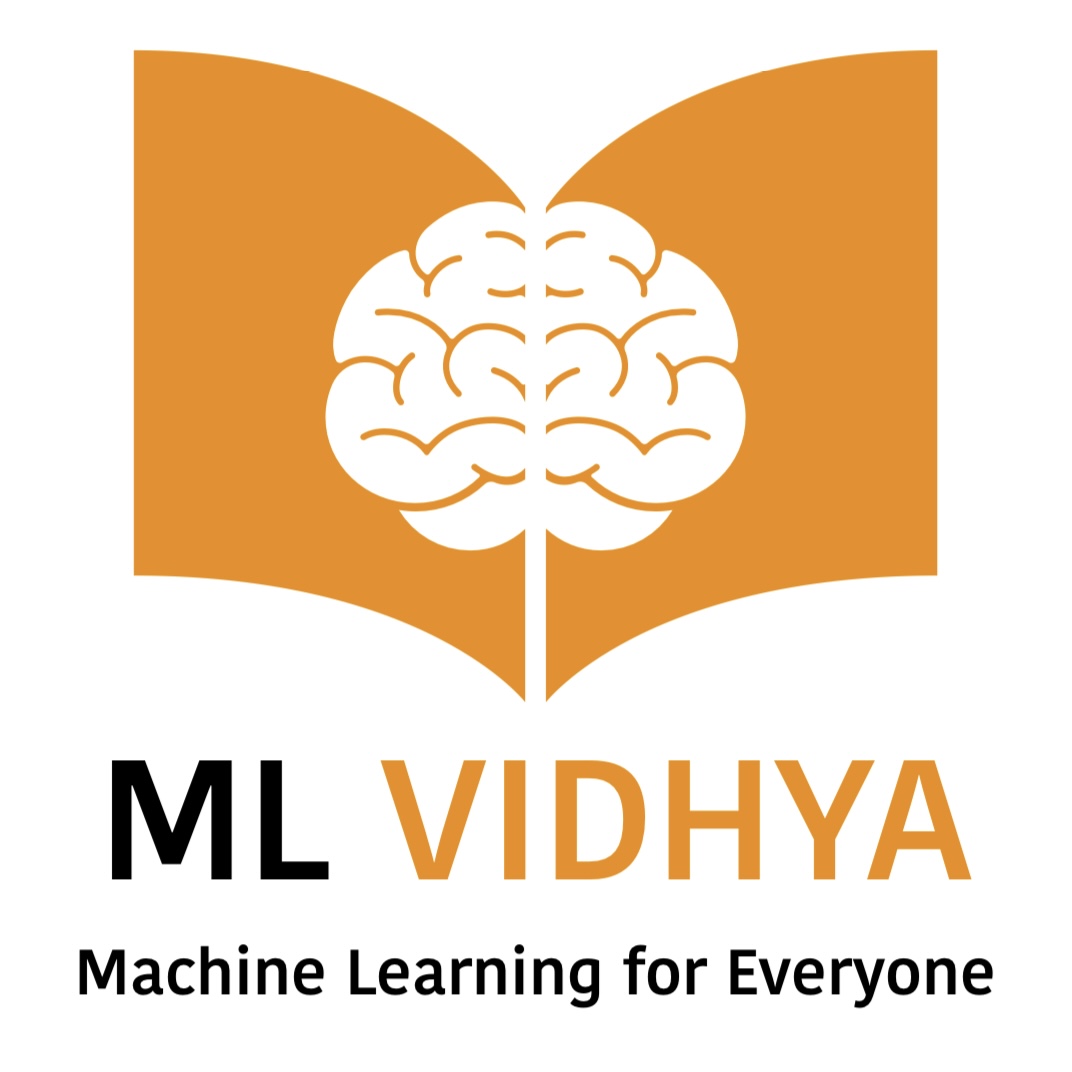The use of Machine learning and Artificial intelligence is changing the way we do business. ML and Al solve complex business problems (Finance, Banking, Insurance, Manufacturing) using data and mathematical calculations. But these business problems do not come to you as a machine learning problem.
This article covers how to convert a business problem into a machine learning problem. We suggest you read this article on steps in the machine learning lifecycle for ML solution development.
Table of Contents
ToggleExample of Business Problem Statement
In Manufacturing
Since last year, the shop floor productivity has been reduced because of the increase in machine breakdowns. Our goal is to increase overall productivity by reducing machine breakdowns by 30%.
Medical
Determine the probability of a person having heart-related problems without the need to visit the hospital.
Finance
Find the opportunities in the stock market that can give a 5% return in the next eight weeks.
Banking
A bank is receiving 20 complaints regarding unauthorized online transactions. They want to eliminate the unauthorized transaction and are ready to accept if this implementation increases the transaction time by 30 seconds.
Activities to convert business problems into ML Problem
Here is the list of activities you need to do to translate a business problem into a machine-learning problem.
- Understand and define the business problem
- Define performance parameters
- Brainstorm possible solutions for machine learning problem
- Feasibility study for proposed business problem solution
- Select the best proposed solution and define the business case
- Convert business problems into machine learning problem

After these activities, you may conclude that machine learning or artificial intelligence is not a correct approach to solve the given problem.
Here is the list of possible solutions for a business problem
- Traditional Programming
- Machine learning or data science
- Artificial Intelligence
- Solution exists
Understand and define the Business Problem
The first step in solving any business problem is to understand the problem in-depth. Here is a list of tasks we can do to understand the business problem.

- Talk to business leaders and note the keywords they are talking about. Ask them their thought on what solution will work.
- Try to find the problem’s root cause.
- Note down the type of data they have related to this problem.
Defining End Goal: Performance Parameters for ML Solution
We define the performance parameters to analyze the machine-learning solution. The new or proposed machine learning solution must add value in terms of cost, quality, or value delivery compared to the existing solution.
The defined performance parameters must be agreed upon with the team.
Brainstorm Possible Solutions for Machine Learning Problem
We can list out and brainstorm multiple possible solutions if we know the problem’s root cause, existing solutions, and available data related to the problem.
We can do the following activities to list multiple solutions for the business problem.
- Try to find out where else or which other businesses face similar problems.
- How your competitors are managing the defined problem?
We can expect the following inputs with the above exercise:
- List of proposed solutions.
- List of benefits from proposed solutions.
- Determine the list of data required to implement the proposed solution.
- Do we have the data for each proposed solution?
- How can we generate the data?
Feasibility Study for Proposed Business Problem Solution
We can proceed with feasibility study when we have the following inputs:
- Understanding of the business problem
- Evaluation Criteria
- Multiple Solutions for business problems.
We do the feasibility study on all proposed solutions to determine the following points.
- How the proposed solution will add value to the existing solution.
- Do we have or can generate the required training data for solution implementation?
- What will be the implementation and product running costs?
The best way to get answers for the above points is to create a prototype or trial the solution at a relatively small scale and evaluate the results.
After a feasibility study, we create a matrix that lists the possible solutions with their evaluation results, implementation cost, and benefit delivery or value addition.
Select the best-proposed Solution and define the Business Case
You can ask business experts to review the proposed solution matrix. It will help you in selecting the best-proposed solution. Afterward, you can create the business case for the proposed solution.
Convert business problems into Machine Learning Problem
We need the following inputs to formulate machine learning problem:
- Problem Definition
- Training Data
- Evaluation Criteria
We have all the required inputs to formulate machine learning problem. Now, our business problem is a machine learning problem. The above exercise to convert a business problem into an ML problem will help us find the best Machine Learning solution for our application.
Example to translate business problem into a Machine Learning Problem
Problem Statement:
You are working with a manufacturing firm, and the production manager tells you about the loss in productivity due to unexpected machine breakdowns on the production line. Reduced productivity causes a delay in customer delivery, and reduction in new orders.
We need to do the following activities to translate a business problem into a machine learning Problem.
1. Understand and Define the Business Problem
Talk to Business Leaders
During the problem discussion, experts gave you the following inputs to reduce machine breakdowns:
- Replace all old machines with frequent breakdowns with new machines.
- Increase the maintenance frequency.
From the above discussions, we can conclude old machines and maintenance frequency can be the root cause. Therefore we can improve productivity by replacing old machines or doing more frequent service.
We ask for the following data for better problem analysis
- List of old machines and the cost of acquiring new machines.
- Machine total run time along with breakdown and service history.
2. Define Your Business Goal
Define the performance parameters to analyze the proposed solution. If any solution still exists, your solution must add value in terms of cost, quality, or value delivery. You ask about business expectations from the new solution.
You: What are our expectations from this new solution?
Manager: Ideally, sudden machine breakdown should come down to zero. But it’s also acceptable if we reduce machine breakdowns by a minimum of 50%. Why don’t you present a business case for your proposed solution?
You: Sure, I will provide you with a business case with expected benefits and costs for implementation. We will consider the number of machine breakdowns per month as a performance measure.
3. Brainstorm Multiple Solutions
When, we understand the problem and know the end objective. The next step is to look for existing solutions with and outside organizations.
Find Existing Solutions within the Organization
Firstly, you decide to talk to the manufacturing team.
You: What are we doing to prevent machine breakdown?
Shop Floor Manager: Now, we manually monitor the machine’s working hours and plan machine maintenance after the machine completes the defined working hours.
You (curiously): Why do machine breakdowns if we do the machine maintenance on a defined time?
Shop Floor Manager: The machine monitoring sheet is not that much accurate. Sometimes, the machine maintenance is delayed due to customer orders.
Shop Floor Manager: The existing solution is a good solution if implemented as per plan.
Solution-1
- Improve the data monitoring process and shut down the machine if machine maintenance time exceeds the defined time. (This solution does not require the implementation of ML).
- We can use a smart energy monitoring system to monitor the machine and determine the machine’s running time accurately using power consumption data with time.
- Further, we can raise the alarm or shut down the machine, if its maintenance is not done on a defined time.
Explore out-of-box Solutions (Solution-2)
You come across a new technology, predictive machine maintenance when you were exploring alternative solutions. After research, you find out this solution is more reliable and will give better results. But, it is computationally expensive and will take more time to implement.
- We can use this solution as a Solution-1 extension.
4. Feasibility Study for Proposed Solution
As discussed earlier, we can create a prototype for the proposed solutions (Solution-1 and Solution-2) and implement it. As a result, we will start getting data from new solutions.
Afterward, we can use hypothesis testing to prove if the proposed solution is better than the previous solution.
5. Define Business Case
After internal discussion, we can make a business case from the performance parameters and experimental data.
Business case for Solution-1:
We can reduce the machine breakdown by 50%. Solution-1 implementation will improve customer satisfaction and save 10 million in the next three years.
The solution implementation and running cost is 4MM, and 0.5MM / month. The solution will be ready in 4 months.
The business case for Solution 2:
We can reduce the machine breakdown by 80%. Solution-2 implementation will improve customer satisfaction and save 16.5 million in the next three years.
The solution implementation and running cost is 6 million, and 0.8MM / month. The solution will be ready in 4 months.
If your team agrees, you can move ahead with the proposed solution.
